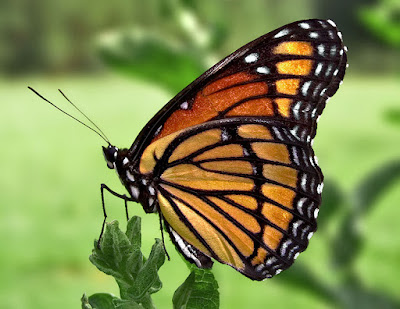 |
| How to make a butterfly garden |
Reports from organizations Butterfly Conservation and the Centre for Ecology and Hydrology have highlighted the continuing decline of our native butterflies by measuring the changes in their distribution and population levels. Their findings show that populations are diminishing rapidly with over three quarters of our 59 resident species in decline and 5 others already extinct.
 |
| How to make a butterfly garden |
With the arrival of the Edwardian pleasure during the 1880’s non-edible gardens plants suddenly became fashionable as well as accessible. Then, in the wake of heroic Victorian plant hunters, the English garden was no longer viewed as a valuable source of food, herbs and medicines, but instead had become a place of peace and beauty. After millions of years of evolution flowers were not just a specialized body designed to attract pollinators, to Victorian eyes they had ascended to a thing of beauty. Unfortunately, to the up and coming career gardener they were also became something to be manipulated.
Luckily for us, and more so nature at large, all is not lost. Even the smallest garden can become a haven for butterflies just so long as you keep to a few simple rules.
Rule 1. PLANT FOR BUTTERFLIES
Butterflies require a good supply of nectar throughout the year, they need it as a source of energy. You should select a variety of nectar-producing plants with the aim of providing flowers in bloom throughout the season. This will entice a continual succession of new visitors to your garden. It is especially important to have flowers in mid to late summer, when most of our native butterflies are active. If you have fruit trees in your garden then you may wish to keep an area for some over-ripe fruit. Plenty of species will be happy to feed directly off the fermenting fruit juices, although there may be some side effects.
Rule 2. MORE IMPORTANTLY PLANT FOR CATERPILLARS
The majority of caterpillars feed on leaves; although some will develop on the reproductive parts of flowers or seeds. If there are not enough food sources at each of the butterfly’s developmental stage then they will perish.
.
Rule 3. ABSOLUTELY NO INSECTICIDES
.
Systemic insecticides like Provado (Imidacloprid) can stay within the affected plants for up to 4 months. The active chemical is transported throughout the plant using its vascular system even reaching the pollen and nectar supply. One feed from an infected plant is generally enough to kill whatever insect fed from it.
Rule 4. CREATE SHELTERED AREAS
This is important to butterflies for a number of reasons. Butterflies prefer to feed and lay their eggs in warm sheltered areas where they are not at risk of being buffeted by strong gusts of winds. Preferring the warmth of the sun, neither do they like to stay in areas where they are at risk of being overly cooled by the wind.
Rule 4. CREATE SHELTERED AREAS
This is important to butterflies for a number of reasons. Butterflies prefer to feed and lay their eggs in warm sheltered areas where they are not at risk of being buffeted by strong gusts of winds. Preferring the warmth of the sun, neither do they like to stay in areas where they are at risk of being overly cooled by the wind.
Rule 5. CREATE A 'PUDDLING' AREA
Male butterflies often make their way to “puddling” areas. These can include mud puddles, moist soil along stream banks, and animal faeces such a freshly laid cow pat. There they can ingest the salts important in sperm production. Create your own 'puddling' area for male butterflies by designing water puddles and wet, sandy areas into the habitat. You may wish to add a slight pinch of sea salt for extra mineral content.
Rule 6. WINTER PROTECTION
Throughout the growing season and in the autumn, resist the temptation to remove dead flower heads and foliage from your plants. By doing so you may be accidentally be removing eggs or pupating butterflies. Due to global warming some butteries such as the red admiral can overwinter as adults. For these hardier varieties you may wish to provide log or brushwood piles for winter protection.
To conclude, if we do nothing more than give the few butterflies that are left in the urban environment a fighting chance of survival then there is no reason why we shouldn't be around to see a stop in the decline of this most wonderful of species. However if we continue to put the needs of our vanity before the needs of our wild life then what else can we expect other than destruction of our own environment. The one thing we really do need to survive as a people.
In text image credit - Piccolo Namek licensed under the Creative Commons Attribution-Share Alike 3.0 Unported license
For related articles click onto the following links:
Butterfly Garden
THE DEAD LEAF BUTTERFLY
THE DECLINE OF BUTTERFLY AND CATERPILLAR HABITAT
HOW TO ATTRACT THE HUMMINGBIRD HAWK MOTH
THE PAINTED LADY BUTTERFLY
THE SWALLOWTAIL BUTTERFLY
THE WORLD'S LARGEST BUTTERFLY - Ornithoptera alexandrae
WHAT IS THE DIFFERENCE BETWEEN A MOTH AND A BUTTERFLY?







No comments:
Post a Comment